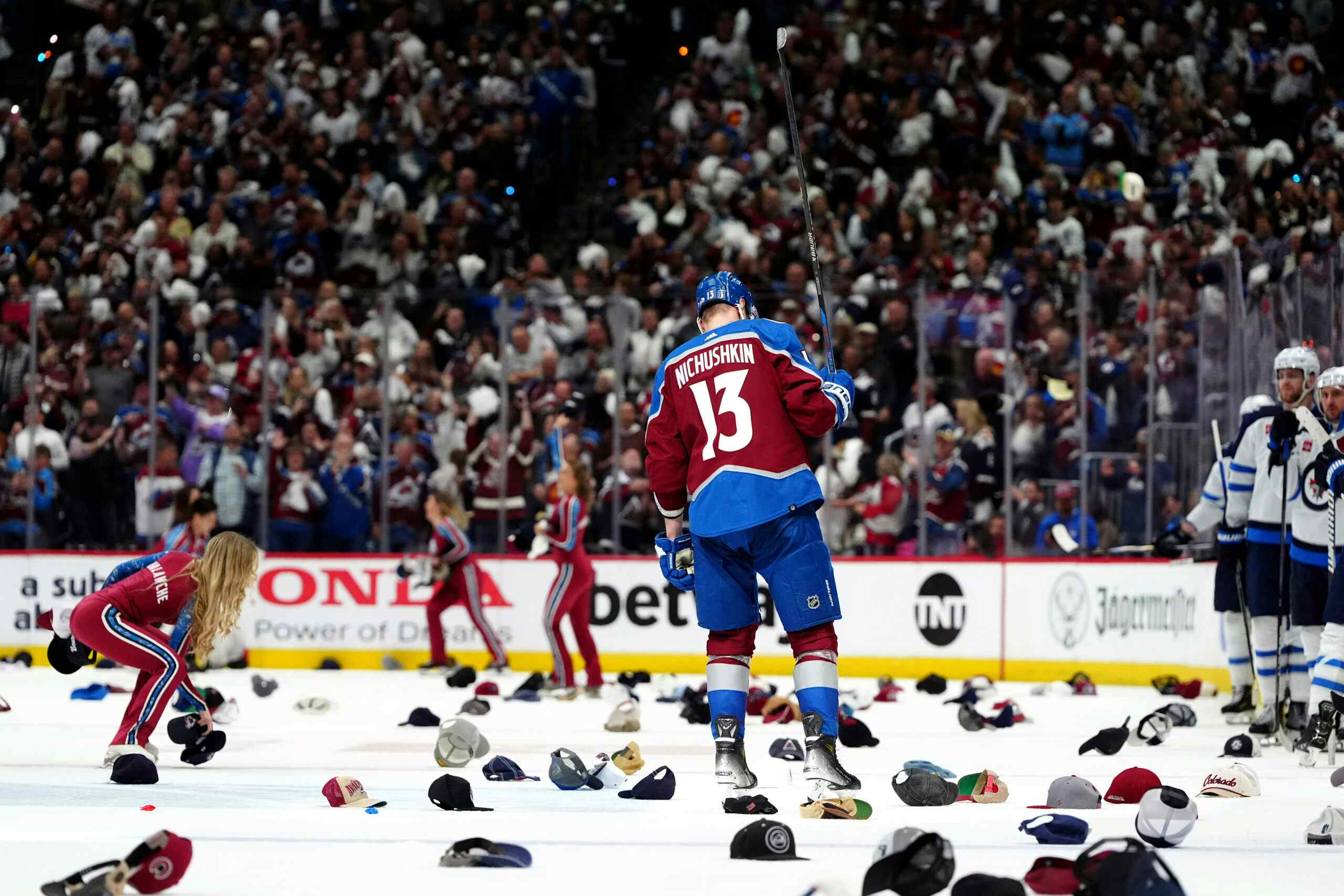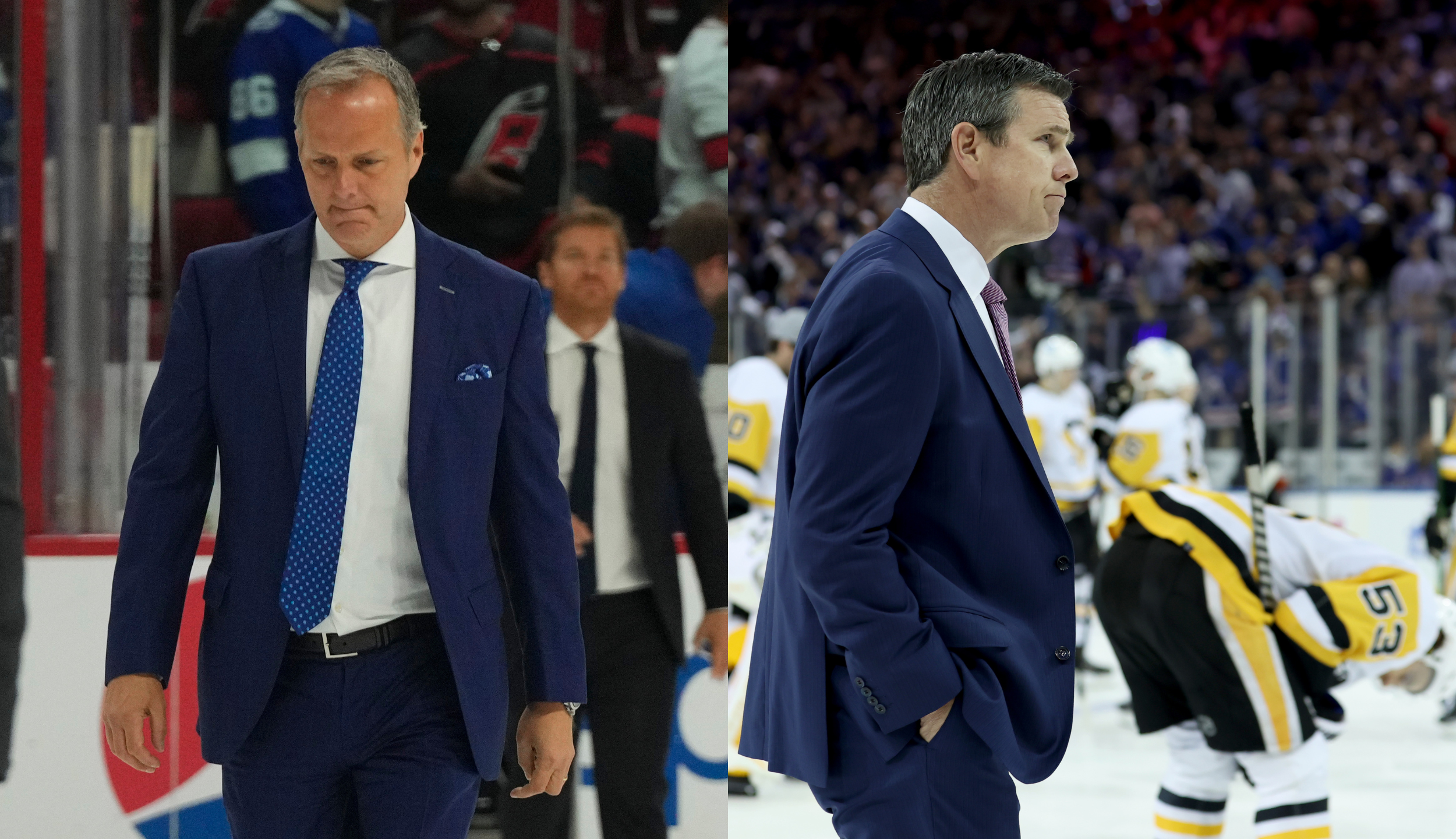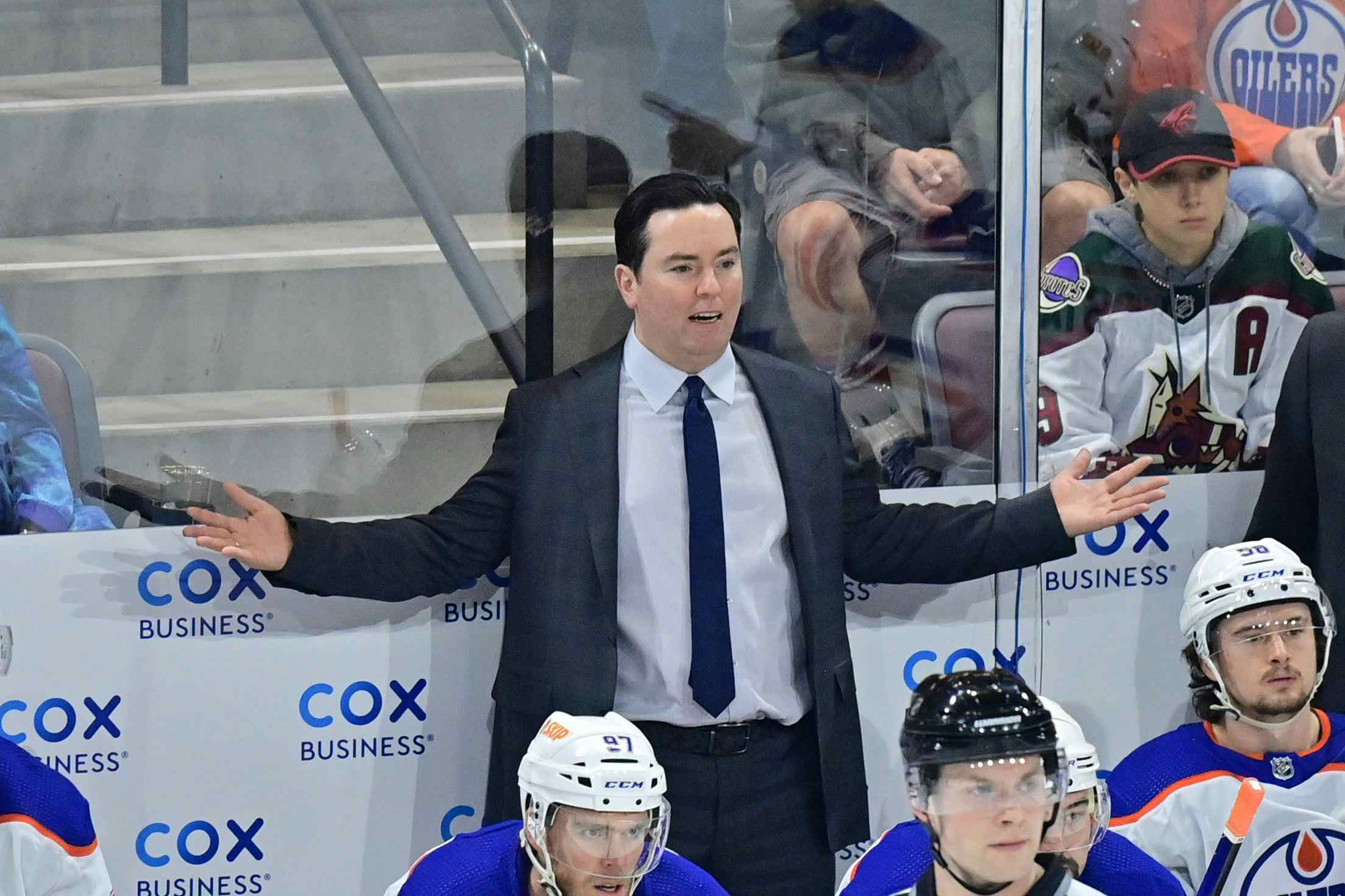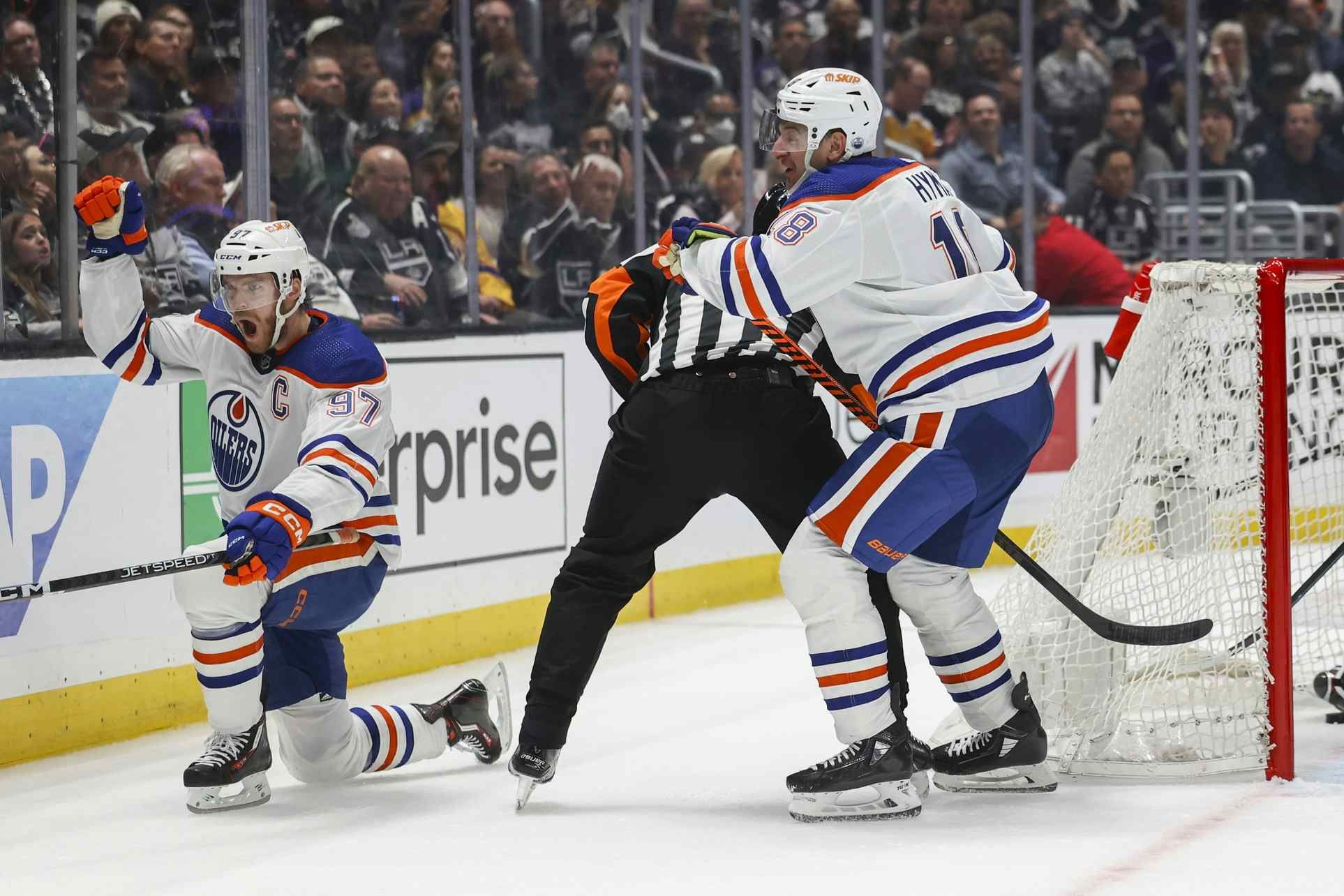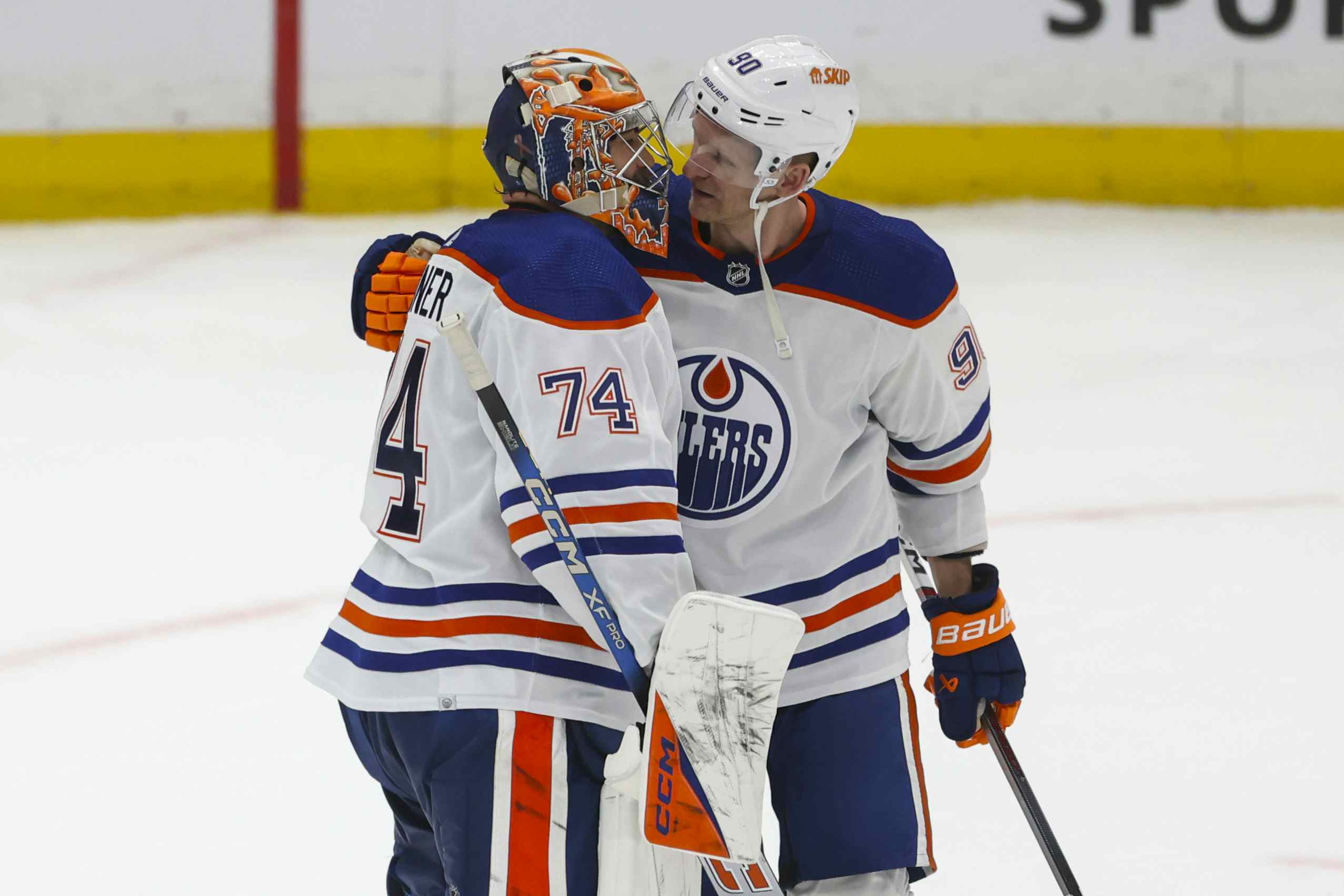Trilogies (part three)
By RexLibris
11 years agoThe Good, the Bad, and the Ugly
The characters of Tuco and Angel Eyes (the Ugly and Bad) were originally meant to be played by Gian Maria Volonte and Charles Bronson, respectively. However, Sergio Leone eventually picked the wonderful Eli Wallach and inimitable Lee Van Cleef. Eastwood had to be convinced to take the role and exacted a heavy price from Leone for doing so that, in some ways, set a precedent for many actors negotiating starring roles today.
When I started this project I decided to parse out the prospect list and determine the likelihood of each prospect making the NHL at some point in their career. This would give me a handle on the true depth of the Oilers’ system and perhaps highlight any areas of concern.
Part of this effort rises from my unsettled feeling about optimism. Things are beginning to look good, and I am naturally inclined to simultaneously want to believe the hype and find the dark cloud in the silver lining.
In order to try and determine the possibilities for all of these Oilers prospects, I have broken them down into groups of similar levels of talent as well as rough boundaries of age, and have tried to adjust the success rate according to an approximate rate of attrition based on a number of factors. These include failed development, injury, early talent ceilings, and trade. The greater the perceived level of talent, the lower the likelihood of a failed career; for instance, if we look at the three forward rookies promoted from 2010-2011 in Taylor Hall, Jordan Eberle, and Magnus Paajarvi we would now declare that two are established 1st line players while the third is still developing and there is discussion about his eventual place on an NHL roster. Two would be considered successes, but one is being put aside as a “to be determined” due to realigning expectations. If Paajarvi can find the range as a perennial NHL player providing depth and a wide range of useful skills to any roster, then I think we could call his drafting a success. The hype and expectations surrounding him may indicate disappointment, but we have to divorce draft position from fan expectations or franchise propaganda. Also, if you go back and read the talent analysis from his draft year, his listed strengths and weaknesses sound like the complete opposite of what we might expect today.
This approach isn’t meant to be definitive or scientific. I’m really working off of gut feeling and back-of-an-envelope kind of deduction here, but this part of the exercise isn’t meant to provide any unassailable answers so much as help to illuminate slightly what is becoming a very muddy and complicated picture.
Trios
Remember Eric Brewer, Jeff Woywitka and Doug Lynch? All three were Oilers defensive prospects within a range of ability, expectation, and age. As it turned out, one wasn’t good enough, one was derailed by injury and the third is in the back nine of a long career. I know it is only one example, but I’ve seen similar groups of prospects, in this case a trio, play out over the years, so I’m going to run with that here.
Before we begin, I’ll define a few terms. For me, a regular NHL player would be someone that logs 200+ NHL games in a career, in any available role, and regardless of points or their eventual NHL team. I don’t care if he was drafted as a scoring winger and had to carve out 800 NHL games as a goon, the player is what is important for me here. The definition of a partial player/AHL regular is be someone perhaps in the range of Krys Kolanos, someone who gets lots of looks but never can make it stick and get a permanent roster spot.
As a group I think we could place Ryan Martindale, Tyler Pitlick and Curtis Hamilton together and estimate that a reasonable rate of success would be one of those three becoming a regular NHLer with another becoming a partial player/solid AHLer, while the third may never exceed the AHL in his professional career. I think that one out of three, for depth prospects, is about as good as one can expect. It is a rule that I have generally applied when reviewing prospects for both the Oilers and other organizations. In cases where two or even all three of the players become NHL contributors then all the better. But I tend to prefer to err on the side of caution.
Another group we could place together would be Anton Lander, Cameron Abney and Troy Hesketh. We already know that Hesketh is out, and Cameron Abney was seen as a poor pick right from the moment he was taken and may yet become a career AHLer, while Anton Lander has struggled mightily since coming over from Sweden but most seem to believe that there is a potential NHL player in there somewhere. This group would suggest, when looking at drafted players of middling talent taken in the 2nd and 3rd rounds, that again, we could expect to see perhaps one out of every three push for an NHL job.
*I’m not handing Lander anything. I deliberately say “push for a job”. He may well fall short and we have three NHL busts in a single group. Stuff happens.
I would probably put together Mitch Moroz, Travis Ewanyk and Daniil Zharkov into a cohort. Or perhaps Tobias Reider, Kristians Pelss and Toni Rajala as another trio. Both groups could have roughly the same expected ratio of success and I think there are at least two potentially serviceable depth NHL players somewhere in that group.
Mark Arcobello, Tanner House, and Kellen Jones could be grouped together, and while I can’t say that I know a great deal about them as prospects, based on early reports and the history of players with their specialties making the NHL, I would be very surprised if any of them could become an NHL regular to the tune of 200+ games. That being said, they are all players who have explored the college route, either before or after joining the Oilers. House has size and Arcobello appears to have skill. If they’ve made it this far, could they get any further?
Jujhar Khaira, John McCarron, and perhaps Phillipe Cornet make something of an odd collection, but they are each considered to be something of a combination of project and prospect. Early appearances would have Cornet as the surefire AHL bet with Khaira holding out as a potential NHL prospect and McCarron as the possible fadeaway name here. Time will tell, but at this point even expecting one of these three to become an NHL player on a regular basis might seem optimistic. The early money is on Khaira, but I suspect the smart money isn’t even on the table.
Lowetide has mentioned in a recent article on his blog that out of Martin Marincin, Oscar Klefbom and Martin Gernat as a group of defensemen that we could hope to see one of the three become an NHL regular in years to come. I’m a little more bullish on those three and believe that all three have a decent chance at making the NHL roster. That being said, if we were to group Marincin, Musil and Gernat together, as two were 2nd round selections and by all accounts the Oilers believed Gernat to be worthy of a top 35 pick, then perhaps it is reasonable to expect that at the very least one of those players will drop off somewhere along the way. For what it is worth, I wouldn’t bet against any, although fate doesn’t really care what I think.
Joey Laleggia, Dillon Simpson and Erik Gustavsson might be another trio we could put together, and hope to see one of the three emerge as a viable NHL player.
Taylor Fedun, Kyle Bigos and Brandon Davidson form a nice cohort of defenseman wherein any one could emerge as a depth NHL defender. Again, I’m not the one to name names here and there are aspects of each that I like. In fact, if you could roll the strengths of all three into one person you’d have one very, very nice prospect, reminiscent of Dion Phaneuf. But if only one can make the grade, then who might it be?
I know I can seem naively optimistic on defensive prospects, more so than I am with forwards. My reasoning for this is that defensemen often seem to come along from seemingly out of nowhere, while the ones that seemed to be good bets on draft day can sometimes meet, but often fall short, of those expectations. The crap-shoot that is drafting seems to grow in uncertainty the closer we approach the net.
Speaking of which…
The goaltenders drafted in these past few seasons can all be put into a single cohort due to similarities in draft order and relative age. I wouldn’t want to bet any which way when it comes to the Oilers and developing goalies. But out of the current four, I think there is at least one future NHL netminder in the bunch.
Who’s Left Standing?
So then lets collect what we can from this: out of a possible 20 forwards (excluding Yakupov and Paajarvi), 10 defensemen (excluding Schultz, Klefbom and Teubert), and four goaltenders, we could probably assume that the Oilers could (emphasis added) unearth between five and six potential NHL forwards, three to four defensemen, and perhaps one future NHL goaltender. Given that the top six forward slots are penciled in for the foreseeable future, and the same goes for at least two or three of the defensive positions, then the organization is looking like it is almost fully restocked.
Would that be an appropriate conclusion?
Here is why I think not. The Oilers, by position, are stocked full of potential depth players. Potential and depth. Those are two words loaded with uncertainty. Not necessarily the best position for a team with a history of injury and contract challenges.
The area in which I have the greatest confidence is the same one of which many outside observers have been most critical – defense. The area that concerns me most is the one that, again, is believed by many to be the deepest – skilled forwards. Particularly at center.
We don’t need to decide who will stay and who will go right now. Fate and time will take care of a lot of that for us. Debating between which of six potential depth wingers will be best suited for bottom-six rotation and to provide some muscle to the lineup is pointless right now. In a few years’ time that number may be down to two or fewer.
The purpose of collecting all of these names and putting them into these small cohorts is to illustrate that not every one of them will evolve into an NHL player, or at the very least will become a long-term member of the Oilers. We’ve all seen the fans of this organization fall prey to great expectations before, and while I sincerely believe that the talent gradually coalescing around the club now is greater than at any time in the last fifteen years, that isn’t an especially high bar to reach.
We need to stay grounded and rational. We aren’t Canucks fans after all.
So, what do I see for this Oilers’ roster in the next four years? Surprises. One or two players will come seemingly out of nowhere to take our breath away and make us glad that Stu MacGregor, Frank Musil, or whomever it was, lobbied to take player X.
I also see disappointments and controversy. Somebody is going to leave the party too soon. It may be over a contract dispute, a salary cap issue, or personal differences. With luck it’ll be due to too many bodies and not enough chairs when the music stops.
There will be some great moments and some downers. There always are. This will be a good team. With good players and some very fun times ahead.
All too soon it will end. Eventually this team will disband, with players leaving for other challenges, new settings and perhaps meeting up again somewhere else with some old friends. Maybe not for a few years yet, but sooner or later these boys will become men, and the men will leave. Jerseys may be raised, and tears will be shed about those good old days.
And we will talk about building anew. In fact, Lowetide will probably be there leading the charge in whatever online forum comes to replace the blog.
I say this because it has all happened before, and we can only pray that before all is said and done, it will happen sometime again.
Now that isn’t the best finale you’ll ever read here on the Nations, but this clip is probably the best finale you’ll ever see on film.
Recent articles from RexLibris

